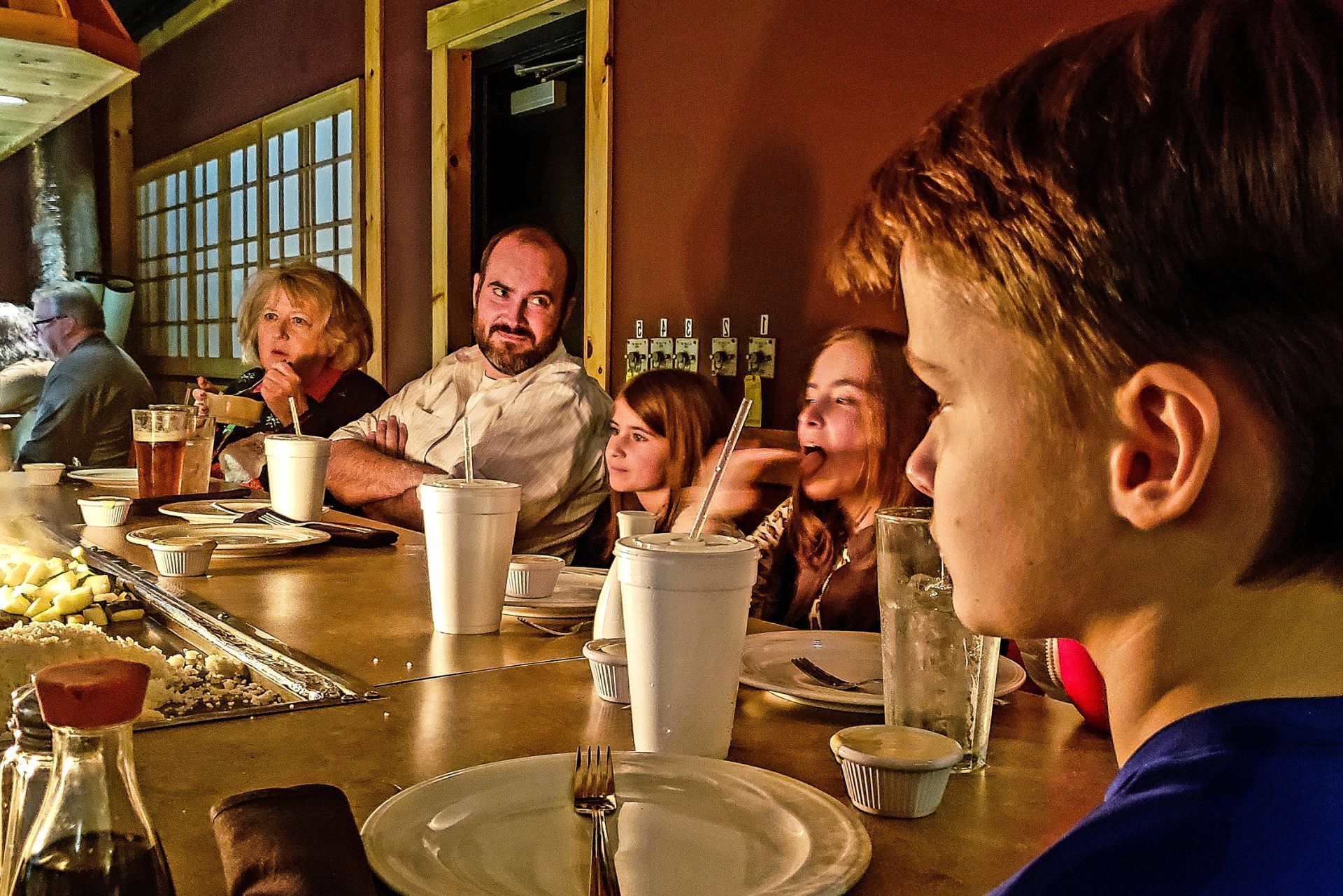Top 3 Recommended Policies

Running a family restaurant in Colorado comes with its unique set of challenges, not least of which is securing the right insurance coverage. From protecting your property to managing employee health benefits, understanding the insurance landscape is crucial for business owners who want to safeguard their investment and ensure long-term success. This article dives deep into the essentials of family restaurant insurance in Colorado, exploring current trends, costs, and strategies to help you make informed decisions.
With Colorado's homeowners insurance premiums averaging 35% higher than the national average, at $1,640 compared to $1,213, it's clear that insurance costs across the board are on the rise in the state. This trend inevitably impacts commercial insurance rates as well, including those for restaurants. For more detailed insights into Colorado's insurance market, The Journal provides an in-depth analysis of these premium increases.
Understanding the Insurance Needs of Family Restaurants in Colorado
Family restaurants in Colorado operate in a dynamic environment, balancing customer service, food safety, and employee management. Insurance policies must reflect these complexities. Key coverage areas typically include property insurance, liability insurance, workers' compensation, and health insurance for employees.
Property insurance protects the physical assets of your restaurant—building, kitchen equipment, furniture, and inventory—from risks such as fire, theft, or natural disasters. Given Colorado’s susceptibility to wildfires and hailstorms, this coverage is especially important. Moreover, it is essential to regularly assess the value of your assets and update your policy accordingly to ensure that you are adequately covered in the event of a disaster. Many family restaurants also invest in additional coverage options, such as business interruption insurance, which can provide financial support during periods when the restaurant is unable to operate due to unforeseen circumstances.
Liability insurance safeguards your business against claims arising from accidents or injuries on your premises. This is critical in the hospitality industry, where slip-and-fall incidents and food-related illnesses can lead to costly lawsuits. It is advisable for restaurant owners to implement rigorous safety protocols and employee training programs to minimize risks, as proactive measures can significantly reduce the likelihood of accidents and, consequently, insurance claims.
Workers' Compensation and Employee Health Insurance
Employers in Colorado must provide workers' compensation insurance to cover medical expenses and lost wages if employees are injured on the job. Additionally, offering health insurance is increasingly vital to attract and retain staff in a competitive labor market. As the demand for skilled workers continues to rise, restaurants that provide comprehensive health benefits often find themselves at an advantage when recruiting top talent. This is particularly relevant in a state like Colorado, where the cost of living can be high, and employees are looking for positions that offer not just a paycheck but also security and well-being.
The restaurant industry in Colorado employs over 303,000 people, accounting for 11% of the state's labor force, highlighting the sector’s importance to the local economy. However, rising insurance costs and slim profit margins make providing comprehensive benefits challenging for many operators. The
Colorado Restaurant Association offers valuable statistics and resources for restaurant owners navigating these complexities. Additionally, many family restaurants are exploring innovative solutions, such as joining health insurance cooperatives, which can help reduce costs while still providing essential coverage to their employees. This collaborative approach not only enhances employee satisfaction but also fosters a sense of community among local businesses, ultimately contributing to a more resilient economy in Colorado.

Rising Insurance Costs and Their Impact on Colorado Restaurants
Insurance premiums in Colorado have been climbing steadily due to a variety of factors, including increased claims and loss ratios. Between 2020 and 2024, the state's homeowners insurance loss ratio averaged 78.6%, prompting insurers to raise rates to maintain profitability. While this statistic directly relates to homeowners insurance, it reflects broader trends affecting commercial insurance markets as well.
For family restaurants, these rising costs can squeeze already tight budgets. In fact, Colorado experienced the highest menu-price inflation in the nation in 2023, a trend driven in part by increased operational expenses such as insurance premiums. This inflationary pressure forces many restaurants to raise prices, which can impact customer retention and overall profitability. As a result, some establishments are being forced to make difficult choices, such as reducing staff hours or cutting back on menu offerings, further complicating their ability to attract and retain customers in a competitive market.
Denise Mickelsen, spokesperson for the Colorado Restaurant Association, emphasized the urgency of the situation: “We have to do something to help restaurants right now, or we're just going to keep losing them.” This highlights the critical need for solutions that can ease the insurance burden on family-owned establishments. The ripple effects of these rising costs extend beyond the restaurant doors, affecting local economies and employment rates. More on the challenges facing restaurants can be found in this Axios report.
State-Backed Insurance Options: The FAIR Plan
To address the difficulties some property owners face in obtaining insurance, Colorado introduced a FAIR (Fair Access to Insurance Requirements) plan in 2025. This state-backed option provides coverage for properties that private insurers deem too risky. While primarily aimed at homeowners, the FAIR plan represents a broader effort to stabilize the insurance market and could indirectly benefit commercial property owners, including restaurants. By offering a safety net for those struggling to find affordable coverage, the FAIR plan aims to promote a more resilient local economy where small businesses can thrive without the looming threat of unmanageable insurance costs.
In addition to the FAIR plan, there are ongoing discussions about potential legislative measures that could further support the restaurant industry. These include tax incentives for businesses that maintain certain safety standards or invest in risk mitigation strategies. Such initiatives could not only help lower insurance costs but also encourage a culture of safety and responsibility within the industry. More details about this initiative are available through
ProgramBusiness, which covers the latest developments in insurance programs nationwide.
Health Insurance Challenges in the Colorado Restaurant Industry
Offering health insurance to employees is a significant concern for family restaurants, especially given the high costs involved. The average cost of a family health insurance plan in the service sector reached $25,600 in 2024, placing a substantial financial strain on small to mid-sized businesses.
Kevin McFatridge, Executive Director of the Colorado Association of Health Plans, notes that “Colorado's health insurance industry operates on incredibly thin margins,” which complicates efforts to keep premiums affordable for employers and employees alike. This delicate balance affects how restaurants design their benefits packages and negotiate with insurers.
Given these challenges, many family restaurants explore alternative strategies such as offering tiered benefits, partnering with local health providers, or participating in group insurance plans to reduce costs while maintaining coverage quality. Some establishments have even begun to implement wellness programs that encourage healthier lifestyles among employees, which can lead to lower insurance premiums over time. By promoting fitness and preventive care, these restaurants not only enhance employee well-being but also create a more engaged workforce.
Balancing Employee Benefits and Business Sustainability
Providing competitive health benefits is essential to attract and retain skilled workers in a sector that employs a significant portion of Colorado’s workforce. However, rising insurance costs can force restaurants to make tough decisions, sometimes limiting coverage or shifting more costs to employees. This reality can create a challenging environment where the need to provide adequate health care competes with the necessity of maintaining profitability, particularly in a post-pandemic economy where many businesses are still recovering.
Industry associations and local government programs often offer resources and guidance to help businesses navigate these trade-offs. Staying informed about policy changes and market trends is critical for restaurant owners committed to supporting their teams without jeopardizing their financial health. Additionally, some restaurants are beginning to advocate for legislative changes that could lead to more favorable insurance options for small businesses, recognizing that collective action may be necessary to address the systemic issues within the health insurance landscape. By engaging in these discussions, restaurant owners not only work towards better outcomes for their employees but also contribute to a broader dialogue about the future of health care in the service industry.

Tips for Family Restaurants to Manage Insurance Costs Effectively
While insurance costs in Colorado can be daunting, there are practical steps family restaurants can take to manage expenses without compromising coverage:
- Shop Around and Compare Quotes: Different insurers may offer varying rates and coverage options. Regularly reviewing policies and seeking competitive quotes can uncover savings.
- Invest in Risk Management: Implementing safety protocols, employee training, and regular maintenance can reduce the likelihood of claims, which may lead to lower premiums.
- Consider Bundled Policies: Combining property, liability, and workers' compensation insurance with one provider can sometimes result in discounts.
- Leverage Industry Associations: Groups like the Colorado Restaurant Association provide access to group insurance plans and advocacy that can benefit members.
- Stay Informed About State Programs: Programs like the FAIR plan may offer alternative coverage options for properties that are difficult to insure privately.
By proactively managing insurance needs and costs, family restaurants can better protect their businesses and employees while maintaining financial stability. Additionally, it’s essential for restaurant owners to maintain clear communication with their insurance agents. Regular discussions about changes in the business, such as renovations or new menu items, can help ensure that coverage remains adequate and relevant. This ongoing dialogue can also provide insights into potential discounts or adjustments that could be made based on the restaurant’s evolving risk profile.
Furthermore, family restaurants should consider the benefits of investing in technology that enhances operational efficiency. For instance, implementing a point-of-sale system that tracks sales trends and inventory can help reduce waste and improve profitability. This, in turn, can positively impact insurance costs, as a well-managed restaurant is often viewed as a lower risk by insurers. Embracing technology not only streamlines operations but also positions the restaurant for long-term success in a competitive market.
The Future of Family Restaurant Insurance in Colorado
The insurance landscape in Colorado is evolving, influenced by economic pressures, regulatory changes, and shifting market dynamics. For family restaurants, staying ahead requires a combination of vigilance, adaptability, and strategic planning.
Despite the challenges, Colorado’s restaurant industry remains a vital part of the state's economy, employing hundreds of thousands and serving as a cultural cornerstone. Continued collaboration between insurers, policymakers, and restaurant owners will be essential to develop sustainable insurance solutions that support growth and resilience.
As the industry navigates these changes, resources like the Colorado Restaurant Association’s industry statistics and expert insights provide valuable guidance for those committed to thriving in this competitive market. Additionally, the rise of technology in the restaurant sector has introduced new risks that require innovative insurance products. Cybersecurity threats, for instance, have become increasingly prevalent, necessitating coverage that addresses data breaches and online fraud. Family restaurants must now consider not only traditional risks but also the implications of a digital presence, making it imperative to stay informed about the latest insurance offerings.
Moreover, the growing emphasis on sustainability and eco-friendly practices is reshaping the insurance needs of family restaurants. Many establishments are adopting green initiatives, from waste reduction to energy-efficient appliances, which can lead to potential savings on insurance premiums. Insurers are beginning to recognize these efforts and may offer incentives for restaurants that implement environmentally friendly practices. This shift not only benefits the bottom line but also appeals to a consumer base that increasingly values sustainability. As such, family restaurant owners should explore how these trends can be integrated into their business models, ensuring they are well-prepared for the future while also contributing positively to their communities.
In conclusion, understanding the nuances of family restaurant insurance in Colorado—from rising premiums to health benefits—is key to protecting your business and workforce. By leveraging available resources and adopting smart insurance strategies, family restaurant owners can face the future with greater confidence and security.
Conclusion: Protecting Your Tattoo and Piercing Studio
Insurance is a vital aspect of running a successful tattoo and piercing studio in Colorado. By understanding the various types of coverage available, the legal requirements, and the claims process, studio owners can make informed decisions that protect their businesses and clients.
Investing in comprehensive insurance not only safeguards against financial loss but also enhances the credibility of your studio. Clients are more likely to choose a studio that demonstrates a commitment to safety and professionalism. As the tattoo industry continues to grow, ensuring that your studio is adequately protected will allow you to focus on what you do best: creating art and helping clients express their individuality.
In the ever-evolving landscape of the tattoo and piercing industry, staying informed about insurance options and legal requirements is essential. By prioritizing protection and compliance, tattoo and piercing studio owners can thrive in this dynamic and rewarding field.
Contact Us
Phone
Location

